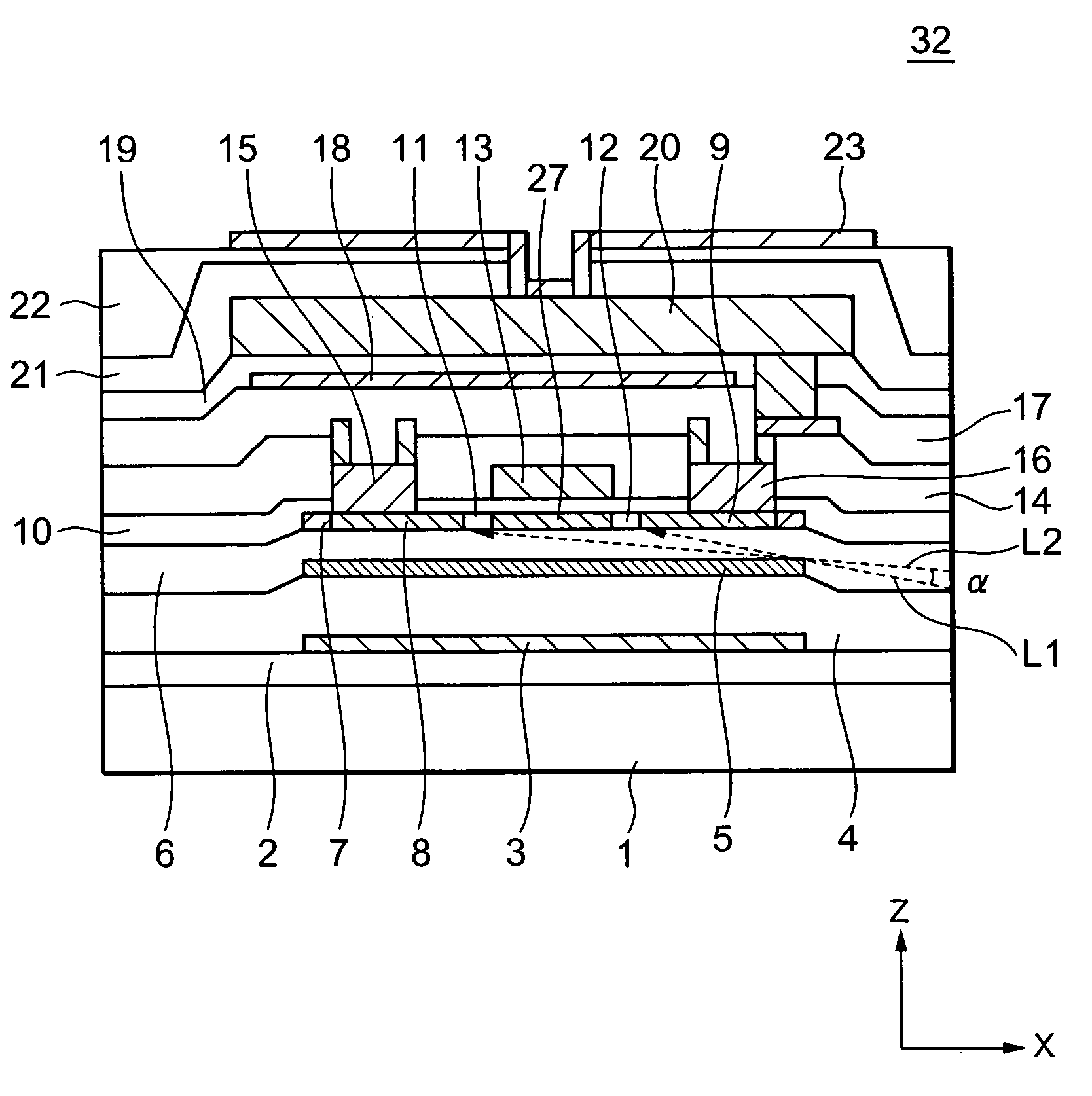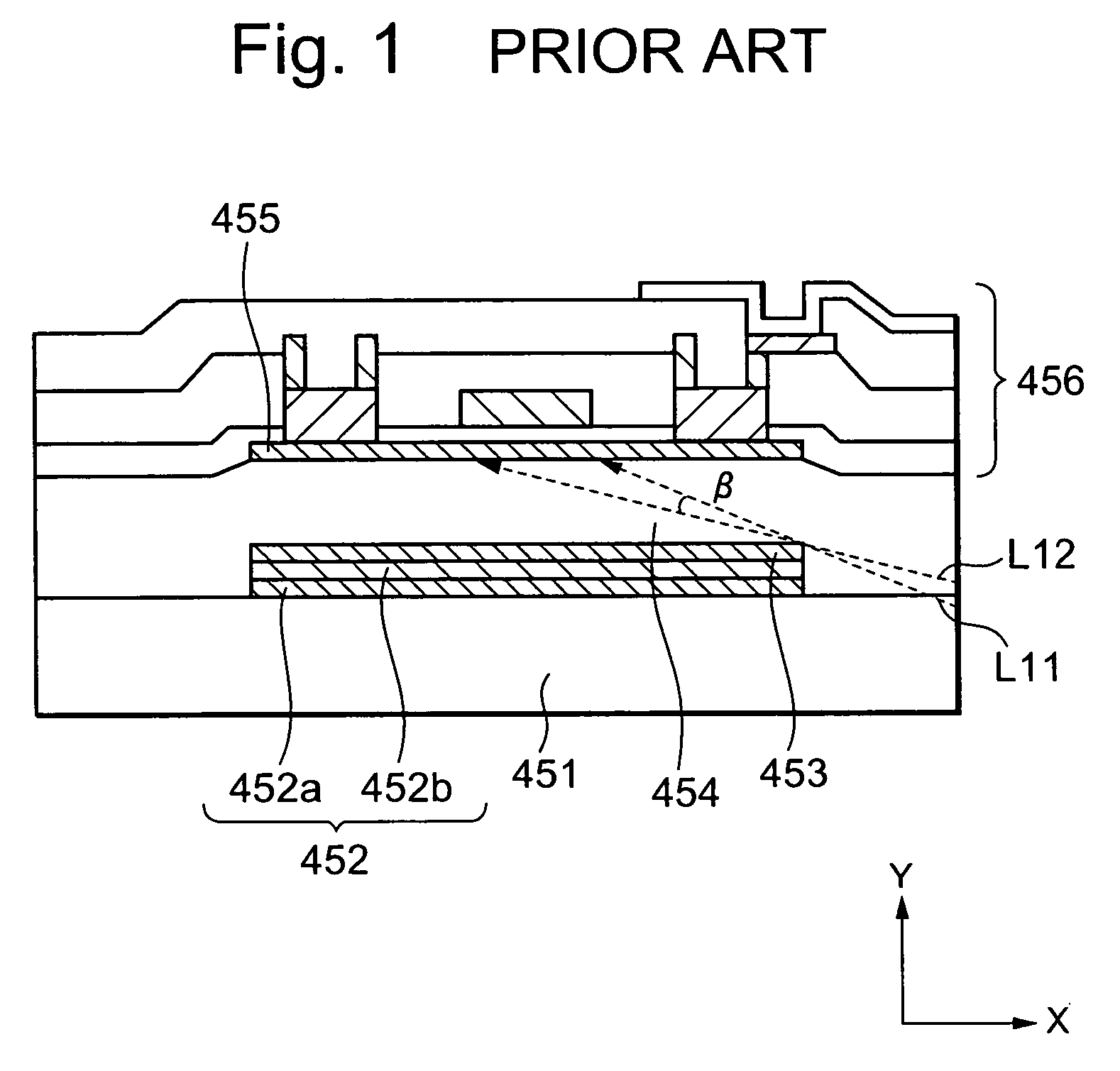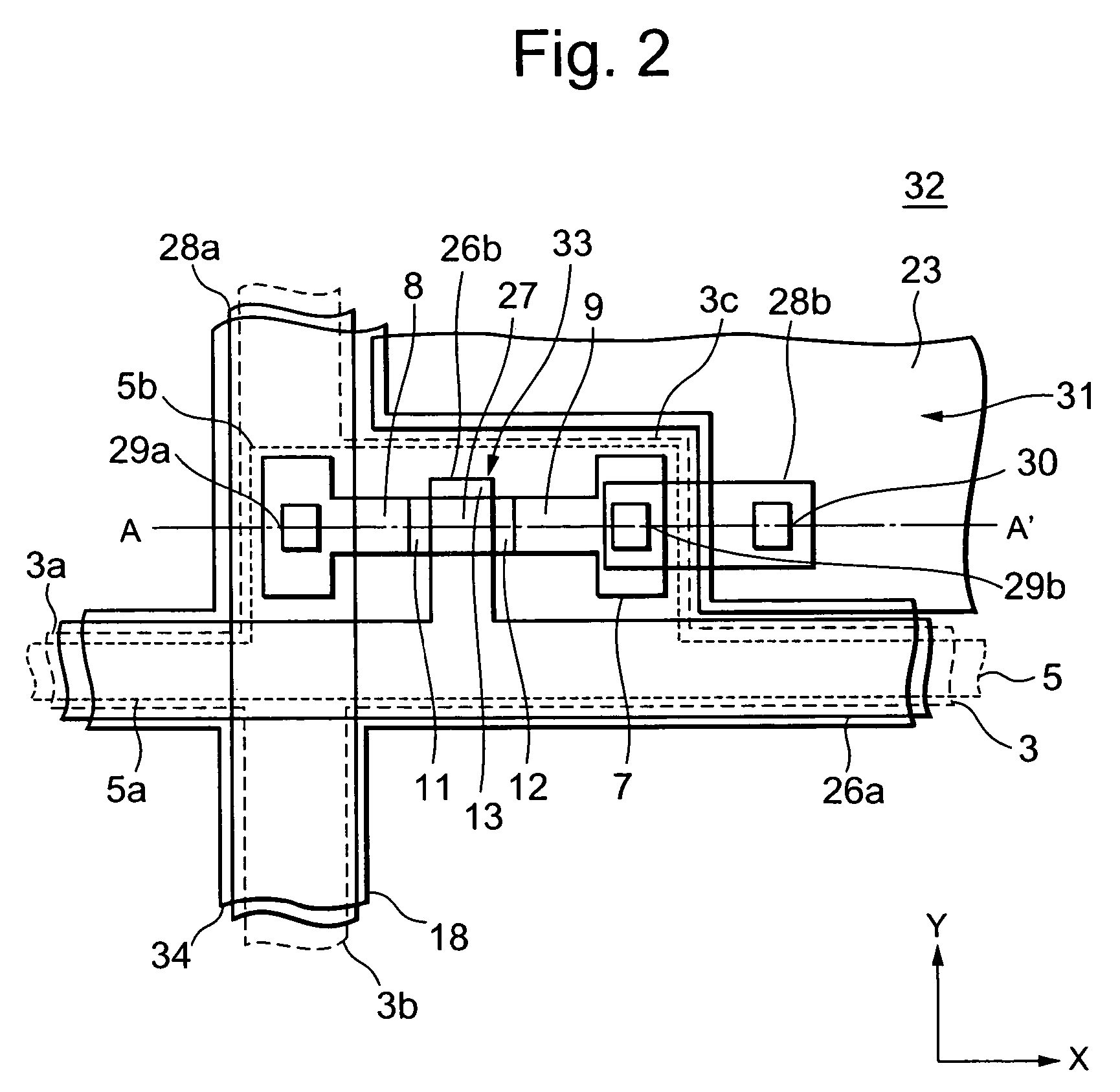Thin film transistor, TFT substrate and liquid crystal display unit
- Summary
- Abstract
- Description
- Claims
- Application Information
AI Technical Summary
Benefits of technology
Problems solved by technology
Method used
Image
Examples
first embodiment
[0029]FIG. 2 is a plan view showing a thin film transistor of a liquid crystal display unit according to the present invention, and FIG. 3 is a cross-sectional view taken on line A–A′ of FIG. 2. In FIGS. 2 and 3, one of a plurality of thin film transistors to be contained in the TFT substrate 32 is shown.
[0030]As shown in FIG. 2, a TFT substrate 32 has a plurality of thin film transistors 33 to be arranged like a matrix shape, and each thin film transistor 33 is formed in the vicinity of intersections between a plurality of data lines 28a extending along a Y direction in parallel with each other and a plurality of gate lines 26a extending along an X direction in parallel with each other. The gate line 26a is made of, for example, polysilicon film or siliside film, in which carrier has been doped, and the data line 28a is made of aluminum film or the like. A black matrix 34 is made of chromium film or the like having light-shielding property, and is formed so as to spatially overlap ...
second embodiment
[0059]FIGS. 10(a) and (b) show a method of making the TFT substrate 32A of the present invention. First, by the CVD method, a ground dielectric film 2 is formed at a film thickness of about 300 nm on the entire surface on the substrate 1 made of, for example, high strain point glass substrate or the like. On the ground dielectric film 2, a tungsten siliside film, which is a metallic siliside film having a optical reflective property, is formed at a film thickness of about 175 nm as the first light-shielding film 3 by the sputtering method. Further, on the upper layer thereof, a second light-shielding film 5 is stacked at film thickness of about 60 nm by the CVD method (FIG. 10(a)).
[0060]Next, photo-resist is left behind in a region, in which the active layer 7 is formed, or in a region somewhat broader than it by the photolithography, and the second light-shielding film 5 is removed by the dry etching method (FIG. 10(b)). Subsequently to FIG. 10(b), by fabricating by the similar pro...
fifth embodiment
[0068]FIG. 13 shows cross-sectional structure of a TFT substrate 32D of a liquid crystal display unit according to the present invention. In this respect, FIG. 13 shows a process of forming the active layer 107 corresponding to an active layer 7 in FIG. 3. Also, the TFT substrate 32D is close to the pixel region 31 shown in FIG. 2, and the drain has a pixel matrix region 103, in which there is formed a thin film transistor for controlling a pixel to be connected to the pixel electrode, and a driving region 104, in which a peripheral circuit such as a driving circuit is formed.
[0069]The TFT substrate 32D having cross-sectional structure shown in FIG. 13 is obtained as below. First, as in the case of FIGS. 4(a) and (b), a ground dielectric film 102 is formed on the entire surface on a substrate 101 to form a light-shielding film 105 at a desired place. At this time; a light-shielding film 105 is formed in a pixel matrix region 103 but the light-shielding film 105 is not formed in a dr...
PUM
 Login to View More
Login to View More Abstract
Description
Claims
Application Information
 Login to View More
Login to View More - R&D
- Intellectual Property
- Life Sciences
- Materials
- Tech Scout
- Unparalleled Data Quality
- Higher Quality Content
- 60% Fewer Hallucinations
Browse by: Latest US Patents, China's latest patents, Technical Efficacy Thesaurus, Application Domain, Technology Topic, Popular Technical Reports.
© 2025 PatSnap. All rights reserved.Legal|Privacy policy|Modern Slavery Act Transparency Statement|Sitemap|About US| Contact US: help@patsnap.com



